Recent Upadeshas from Bodhinatha
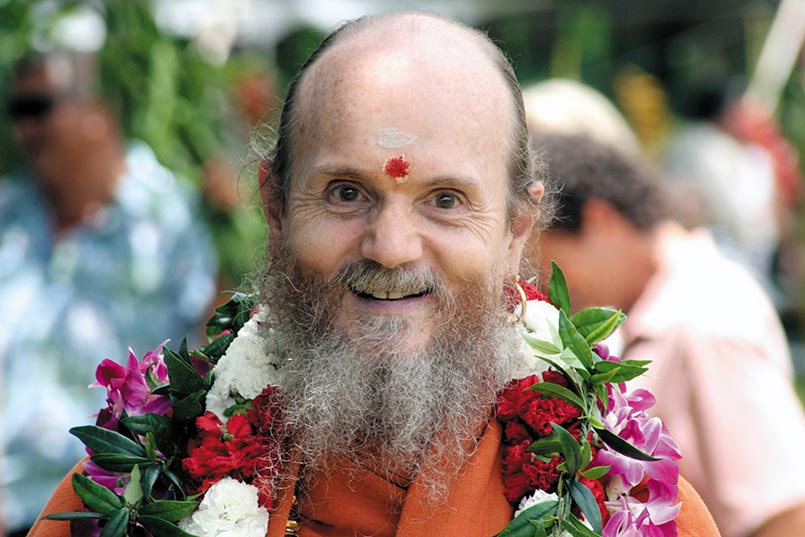
Bodhinatha’s Last Sun One talk is an important reminder to live in the present.
Mindfullness, Being in the Present
SATGURU BODHINATHA VEYLANSWAMI , 2016-05-01
Being mindful, observant, you can learn by watching the reactions of other people and the consequences of their actions. Quiet that area of the mind which wants to excessively talk and think a lot and dwelling in the past and in the future; that is counterproductive to being observant, to awakening the superconscious region and to feeling content.
Master Course, Merging with Siva, Lessons 18,19
What Is Your Self-Concept? You Are A Divine Soul
Bodhinatha’s Latest Upadesha:“Your Self-Concept: You Are A Divine Soul” (April 15,2016)
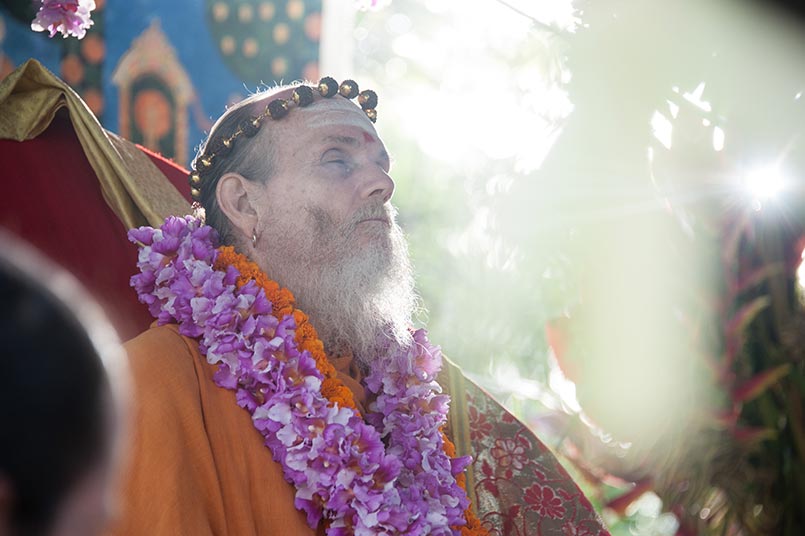
Focus on being a soul, not the body, mind and emotions. When we think of ourselves as a soul we’re able to move forward and get closer and closer to Siva. That’s the whole idea of Saiva Siddhanta. A negative self-concept is an obstacle. We can change our self-concept through applying Gurudeva’s teachings, affirming every day that we are a divine being. Vasana daha tantra: Going back and understanding experiences; clearing up the reactions to the past.
Master Course, Dancing with Siva, Lesson 1.
Click here to go to an index of all of Bodhinatha’s and Gurudeva’s online audio.
Bodhinatha's Latest Upadesha
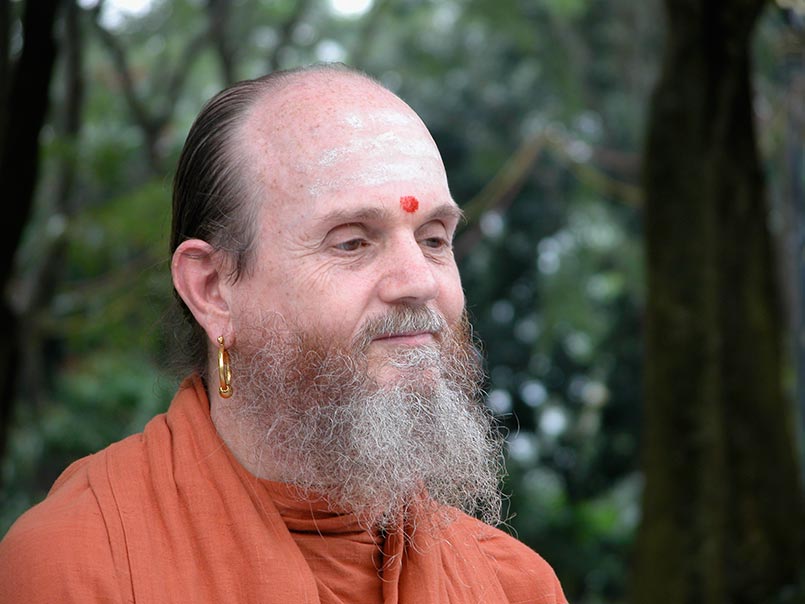
Bodhinatha’s Latest Upadeshas:Moksha and the Two Paths March 17, 2016
Moksha’s three aspects: fully realizing God, resolving karma, performing dharma well. Two ways to achieve moksha: Go into the forest and do tapas, find a guru, renounce the world, study under Him as a sannyasin. The sannyasin is detached from the world, the householder dharmically pursues goals in the world. Gain maturity through experience then naturally turn within; seek liberation.
Master Course, Dancing with Siva, Lesson 340
Click here to go to an index of all of Bodhinatha’s and Gurudeva’s online audio
Satguru Bodhinatha Veylanswami's Sivaratri Talk

Bodhinatha’s Latest Upadeshas:“Sivaratri 2016: The Meaning of Yoga” (March 6,2016)
In his 2016 Mahasivaratri talk, Satguru Bodhinatha Veylanswami describes the subtle meanings behind some of the concepts in Patanjali’s Yoga Sutras and shows how they correspond to Gurudeva’s teachings. Hinduism defined is trying to be in the highest state of consciousness you can, right now. Quieting our thoughts down to the point where there aren’t any. Separate from body, mind and will to attain liberation. Through meditation we can detach awareness from our own five states of mind and experience the consciousness of other forms of life, which is all God Siva. What happens to you is created by you; break the cycle of reaction, make life much more sublime. Find that part of us which is God Siva, that pure energy powers everything.
Patanjali’s Yoga Sutras
Guru Chronicles
Master Course, Merging with Siva, Part Four, Cognizantability the Conquest of the Mind
Click here to go to an index of all of Bodhinatha’s and Gurudeva’s online audio.
Growing Up Without Prejudice – Publisher’s Desk
httpvh://www.youtube.com/watch?v=SXFQk4AGnKw
Satguru Bodhinatha Veylanswami reads his editorial from the April/May/June 2016 edition of Hinduism Today magazine. “Conflict and violence have their roots in hatred learned during youth. By teaching children tolerance, we create a more peaceful future.”
Bodhinatha's Recent Upadeshas
Don’t miss these two new talks from Bodhinatha’s last two Sun One discourses!
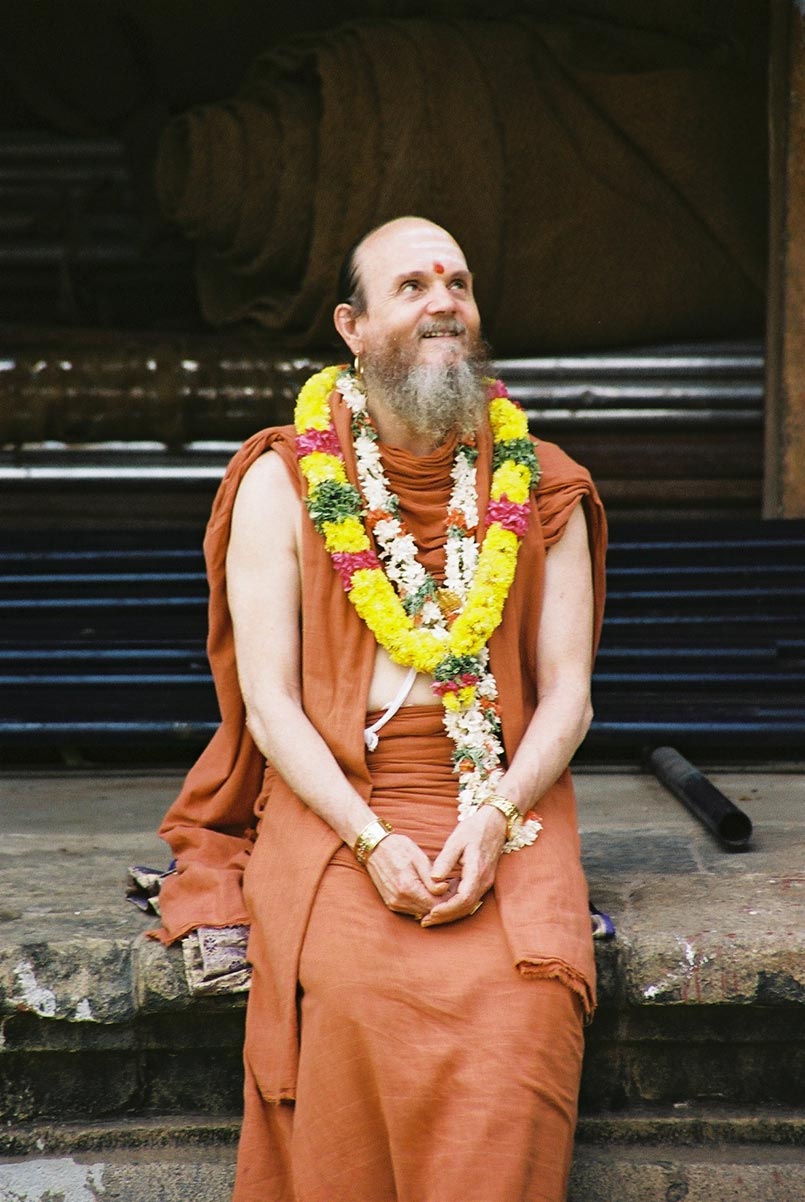
We Know Not
Naam ariyom: We do not know. The approach of our parampara: Not trying to explain the Truth but giving us concepts of God which help us get to the Truth. The intellect cannot experience God. The experience of God as Absolute Reality is even beyond the superconscious mind. “Nothing is everything.” Dissolve into Nothingness, that’s Parasiva.
Master Course, Dancing with Siva, Lesson 154
Focus on Moving Forward
Facing challenges that are difficult cause us to mature spiritually. Doing what is next, our personal path of evolution progresses from one life to the next. There are four stages: service, devotion, meditation and realization; chariya, kriya, yoga and jnana. True maturity is understanding the consequences before you act. Move forward as karma and dharma permits on the winding path toward moksha being content with the consciousness that it usually takes many lives. As Gurudeva says: Enjoy the journey.
Master Course, Merging with Siva, Lesson 317
God is Love, Putting This Into Practice
Bodhinatha’s Sun One Talk is up on our server.
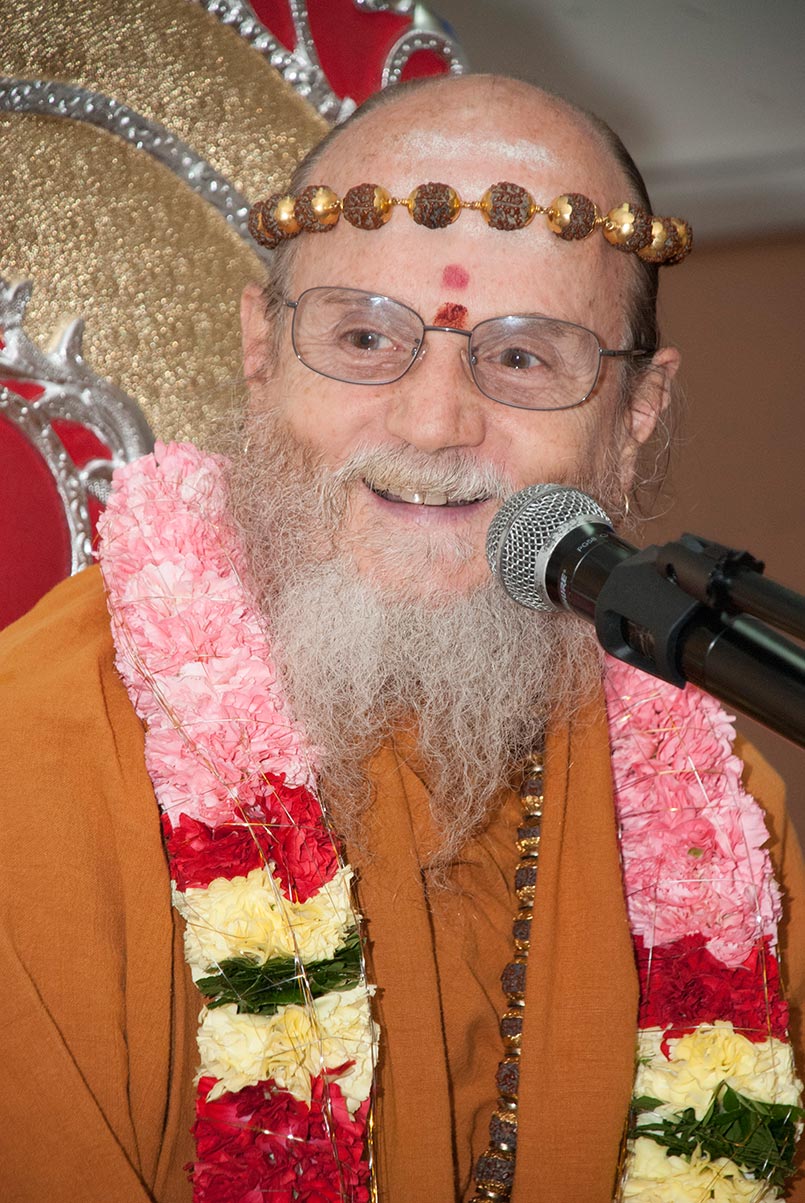
Bodhinatha’s Latest Upadeshas:“God is Love; Putting This Into Practice” (February 2, 2016)
The deepest perception of Love: Love is the ultimate Truth. Our Affirmation of Faith: “God Siva is Immanent Love and Transcendent Reality.” You are also that Love, you are also God Siva. There’s only one Being and that Being is a being of Love. The more we can act from that part of us, the better.
Master Course, Living with Siva, Lessons: 45, 296
Click here to go to an index of all of Bodhinatha’s and Gurudeva’s online audio.
More Travel Photos from Australia

Above are many more photos from Satguru's recent Adelaide Ganesha Temple visit. While there he attended a homa and gave a short talk. Om Gam Ganapataye Namah.
Satguru Visits Adelaide

For the last several days Satguru Bodhinatha Veylanswami and Sannyasin Shanmuganathaswami have been in Adelaide during their visit to Australia. The two visited the the Hindu Society of South Australia Ganesha temple as well as the Adelaide BAPS Mandir. While there Satguru gave the following talk:
"The Importance of Obeying One's Guru"
Adelaide, Australia
January, 2016
Part One
Jai Swami Narayan! Our namaskars to His Holiness Pramukh Swami Maharaj, the sadhus who are here today and to all devotees present. Sannyasin Shanmuganathaswami and I are honored to have been invited to visit BAPS Adelaide Shri Swaminarayan Mandir, inaugurated in April of last year, and speak at this evening satsang. Since 2004 I have been speaking regularly at BAPS Swaminarayan fellowship gatherings, the most recent talk being at the opening of the BAPS mandir in Chino Hills, California
Let me begin by sharing some background on our association with BAPS Swaminarayan Sanstha. Our relationship began some twenty years ago in 1995 when our founder and guru, Sivaya Subramuniyaswami, affectionately known as Gurudeva, first visited a BAPS center in India. He visited Akshardam in Gandhinagar, Gujarat, and the monastic training center in Sarangpur. At Sarangpur Gurudeva was quite impressed by the strict life the young sadhus there were living--sleeping on the floor, eating only what is served to them, touching the feet of the other sadhus each morning, keeping their distance from women and giving up family and career to be of service to God and Guru.
Gurudeva also attended the 75th Jayanti of His Divine Holiness Pramukh Swami Maharaj in Mumbai. He made the following key statement to the 30,000 gathered that evening: "I have three suggestions for all of you, the dedicated members of the Swaminarayan Fellowship. If you follow them, you will succeed. If you follow them, you will grow stronger as individuals. If you follow them, you will add your strength to that of all the others in the Fellowship. If you follow them, Hinduism itself will be made more noble and secure. So, what are my three points of advice tonight? Let's take them one at a time. The first is to obey your guru. The second is obey your guru. The third is obey your guru. Do these three things and you will live a blessed life, and you will also make Pramukh Swami Maharaj very happy."
Though our order of sadhus is less than sixty years old, small and of course worshippers of Lord Siva, still we feel there are a number of strong similarities between our sangam of devotees and yours. Certainly the most important similarity our two sangams share is having a living satguru and a tradition for perpetuating the guru lineage for future generations. Most Hindu organizations do not have such a tradition. In them either the founder who passed on some time ago is the only guru or the organization was formed in the first place without a guru. Organizations that have a lineage of living satgurus are truly fortunate, for the divine blessings of a living satguru help us to make much greater spiritual progress in our lifetime than is otherwise possible.
Our Gurudeva attained Mahasamadhi in November of 2001. On that occasion, His Divine Holiness Pramukh Swami Maharaj sent us a message we would like to share that contains insights into the continuity of the spiritual power of a guru lineage. Swamishri said:
"The first duty of all the disciples and monks of Gurudeva would be to follow every command of Gurudeva and keep on doing the great work he has been doing in letter and spirit. In Hinduism's tradition, the body dies but the spirit and consciousness of the person who has left the body will continue to guide. I will do special prayers personally for Gurudeva, who has done great work. Gurudeva's spirit will continue to guide his successor. Gurudeva's saintliness and spiritual values will continue to guide the whole lineage. This has been the tradition of Hinduism."
Let's look more closely at exactly what it means to obey the guru. The basic way to be obedient is to strictly follow the general principles taught by the guru. These are traditionally found in the scriptures of the lineage, such as the verses of the Shikshapatri. These 212 verses are certainly comprehensive in covering all aspects of life, and Swaminarayan followers are indeed fortunate to have such a clear set of principles laid out to follow in this "Code of Precepts." We have a similar code of precepts written by Gurudeva in 1991. You may be interested to know that he released a second edition in 2001 in which he added a number of verses based upon the wisdom he found in Shikshapatri. The revised version consists of 365 verses, one for each day of the year, and is called the Nandinatha Sutras. These sutras now guide our sampradaya, just as the Shikshapatri guides BAPS.
The importance of obeying the rules of the Shikshapatri is stated by Bhagwan Swaminarayan in verses 205 and 206:
"Hence, all My disciples shall observe all the rules laid down in this Shikshapatri and shall never follow the whims of their lower instincts." (205)
"Those of My disciples who shall live in accordance with the precepts laid down here shall attain all the four desired objects (Dharma, Artha, Kama and Moksha) on earth." (206)
A second form of obedience is to follow any personal advice given to us by the guru. Some Hindus select a guru who is no longer living. They place his picture on their wall and altar and study his writings. I call this a safe guru because he will never ask you to do something you do not want to do; whereas, a living satguru will, in fact, quite often ask you to do exactly what you do not want to do. Being obedient and doing what the satguru has requested may prove to be quite challenging. However, in accomplishing the task you will have made progress on the spiritual path, for he sees, better than you do, the karmas of your life and how you can overcome them.
Let's take as an example a disciple who is quite shy of public speaking. This shyness is based upon a few experiences in school in which he did very poorly in speaking in front of his class. These experiences convince him that others are better than he is. It would be natural for the guru to ask him to do that very thing--for example, to speak in front of a large satsang group every week until he overcomes his shyness of speaking in public. These positive accomplishments improve his self-concept to the point where he realizes he is neither greater nor lesser than anyone else because, in truth, he is the divine being within him. He is not the outer personality, the ego. Rather, he is the inner soul. This change would not have occurred if he did not have a living satguru directing him to do exactly what he was least inclined to do.
In Va-cha-nãm-rit Two Bhagwan Swaminarayan stresses the importance of following the commands of the guru.
"Only one who follows the commands of the Satpurush can be said to be under the influence of favourable circumstances. To deviate from those commands is the very definition of adverse circumstances. Therefore, only one who follows the commands of the Satpurush is behaving as the ãtmã."
To conclude this section of my talk, having a living satguru provides the devotee with an opportunity to make significant spiritual progress in a single lifetime. However, as we previously mentioned, this progress is not automatic. It only occurs when the devotee is strictly obedient to the general rules of conduct of the lineage and follows carefully and fulfills in the right spirit all personal instruction received from the satguru.
A second similarlity between our sangam of devotees and yours is the strong emphasis on having a mandir in which to worship. Knowing this, at the opening of your mandir in Chino Hills, California, I was asked to speak on the topic of "The Role of Mandirs in Spirituality and Society." Next I would like to quote from that talk.
I will begin by describing an interesting project that my guru, Sivaya Subramuniyaswami, was deeply involved in from 1975 to 2001. During those twenty-five years he guided 37 temples in the United States, Canada, and many other countries as well--giving each community or temple an icon of God, usually Lord Ganesha, and guidance when needed. He also helped dozens more temples with direct advice.
Why did my guru devote so much energy to helping establish the temples of organizations with no formal ties to his? He did it because of a strong conviction that it is the temple that perpetuates the culture. In other words, if Hindus move to a country and do not build a temple, after a few generations Hindu culture will have been lost.
The Hindu temple can act as a hub that radiates out Hindu culture into the homes of those families who attend regularly. This process of strengthening culture can happen on a number of levels.
The most basic level occurs in simply learning and following the many protocols of a temple's tradition. We just can't visit without proper preparation. A bath is necessary, wearing clean clothes, preparing an offering tray in a specific way--these acts are all important parts of the preparation.
On arrival we need to handle shoes in a specific way. Then the customary prostrations to the Deities followed by circumambulation and presenting our offerings is done. When attending the puja, men and women need to sit on separate sides. At key points throughout the puja we need to pray in a specific way.
Examples of some of the qualities that children develop from attending the temple would be:
• greater respect for elders and sacred objects
• more understanding of the importance of physical cleanliness and purity
• better understanding of the need to give before expecting to receive
After many years of following temple traditions, important character qualities can deepen in the children such as humility and devotion. These are qualities that definitely are an important part of Hindu culture and may not develop in an individual growing up in the West unless he or she participates in regular worship.
A second level of the influence of the temple into the home occurs when a home shrine is established and worshipped at daily. When possible it should be a separate room. A shrine makes everyone living in the home think more about God and reflect more on their behavior and be less inclined to become angry or argue "in God's presence" so to speak. And going to the temple every week can actually bring home some of the temple's sanctity into the shrine room.
A third level of the influence occurs when a family member, generally the father, learns how to do a full puja, the type done in the home which is known as âtmartha puja. A full puja done daily helps strengthen the religious presence of the shrine and help it better radiate out into the rest of the home.
Again Sannyasin Shanmuganathaswami and I are pleased to be here this evening in this beautiful mandir. Thank you.
Off to Australia!

Yesterday morning, Satguru Bodhinatha Veylanswami and Sannyasin Shanmuganathaswami boarded their flight, and are now making their way to Australia. They'll be in Melbourne through January 17th and will also be visiting Adelaide and Sydney.
From Our Gurus' Teachings
Archives are now available through 2001. Light colored days have no posts. 1998-2001 coming later.
